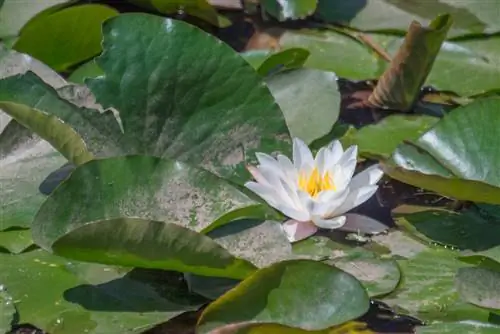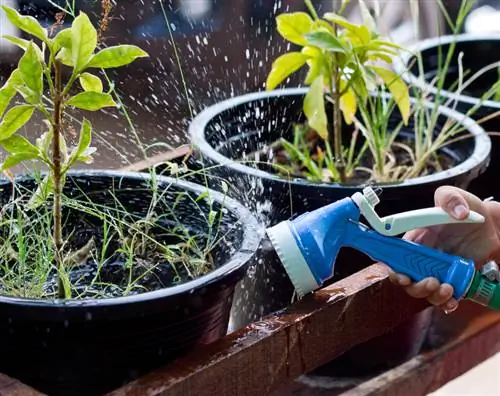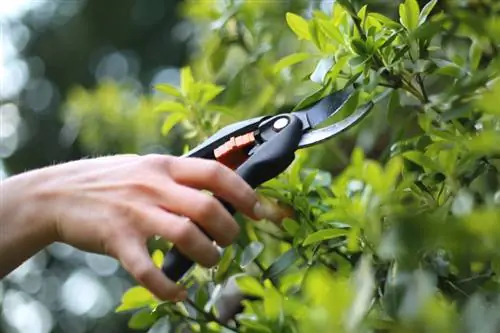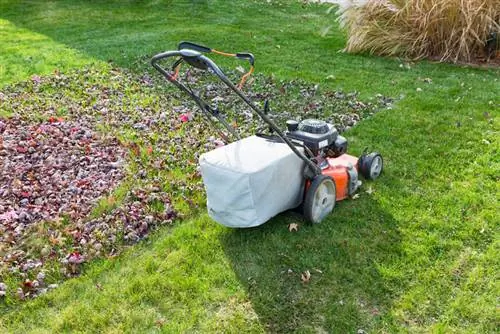- Author admin [email protected].
- Public 2023-12-16 16:46.
- Last modified 2025-01-23 11:22.
Water lilies are survivors that can spread diligently in the pond even without much care. Only now and then is a questioning look necessary to see whether everything is going according to plan. If necessary, customized support may follow.
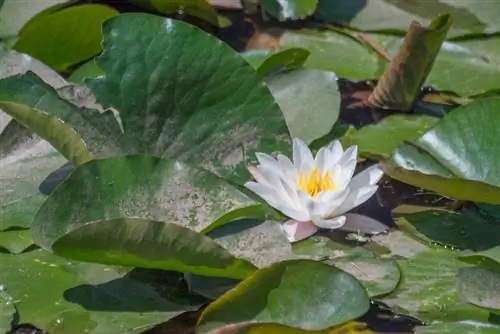
How do you properly care for water lilies?
Caring for water lilies includes observing the correct choice of location and water depth, targeted fertilization with special fertilizer balls, topping up water as needed, cutting to slow growth, regular removal of yellow and rotting leaves, pest control and overwintering frost-sensitive varieties.
Pay attention to location and water depth
Before you promote the he althy growth and blooming of your water lilies with optimal care, you should make sure that they are correctly placed in the pond. Water lilies love sun and should not be shaded. The different varieties also require different water depths. You should adhere to these when planting, otherwise the best care will be of no use.
Fertilize only the water lilies
Water lilies need nutrients from April onwards so that they can start the new growing season well supplied. A liquid fertilizer would quickly mix with water and spread throughout the pond. However, nutrient-rich water promotes algae growth. The water lily leaves can also absorb nutrients through water and grow excessively.
It is better to fertilize with special fertilizer balls from the store or let horn shavings freeze into ice cubes with water so that they are easier to handle.
- Put fertilizer into the substrate
- so it stays close to the roots
- Nutrients are released evenly over months
- One fertilization per year is usually enough
- if applicable. combine with repotting
Refill water if necessary
Water lilies have their roots constantly in the water, so they don't need to be watered. But in a hot summer, when there is no rain for a long time, the water level drops significantly, especially in smaller ponds. This means that the ideal water depth is no longer available. In such a case, refill the pond with the hose.
Cutting as a brake on growth
Water lilies can spread widely and cover the entire pond. They become lazy and affect other plants and animals in the pond. Since water lilies that have grown to the bottom of the pond are difficult orcan only be removed with a lot of effort, it is better to reduce the size of the water lily carpets in good time.
It is ideal if water lilies grow in plant baskets that can be easily removed from the water for pruning. Otherwise, from spring until August at the latest, you can cut off parts of the water lilies and remove them from the pond using pond scissors (€47.00 on Amazon).
Tip
Cut and remove rotting and yellow lily pads as soon as possible so that they do not affect the water quality. With a rake you can also easily remove individual green leaves that overlap each other from the pond.
Check for pests
Controlling pests with chemicals is problematic in a pond because it ultimately reaches all living creatures and affects the ecological balance. Therefore, check your water lilies regularly for signs of feeding as well as visible egg laying, larvae and the gray-brown water lily leaf beetles. Then you can react early and collect the pests or rinse them from the rose with water.
Overwintering frost-sensitive varieties
Native water lily species can spend the winter in the pond as long as it does not freeze over permanently. Tropical species have to move to winter quarters from autumn onwards. This should be bright and between 23 and 25 °C. The use of a plant lamp is usually necessary.

